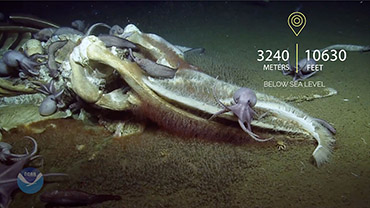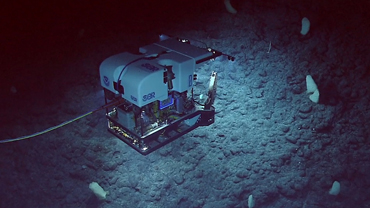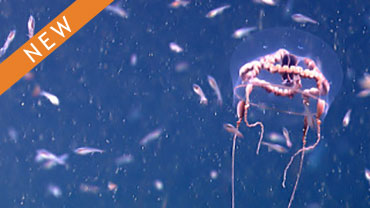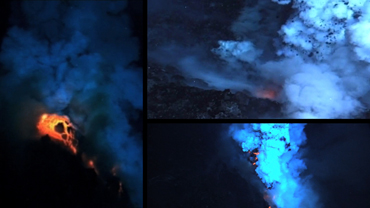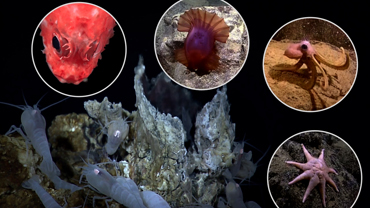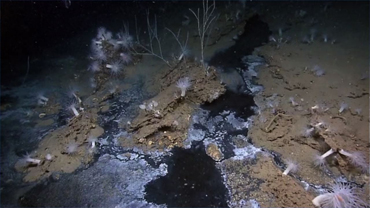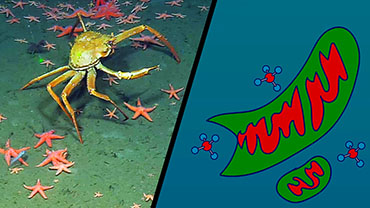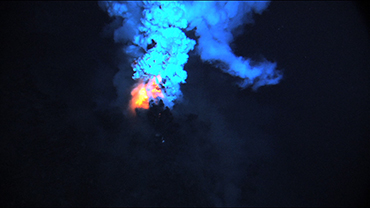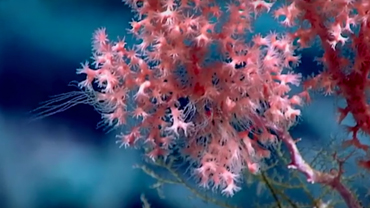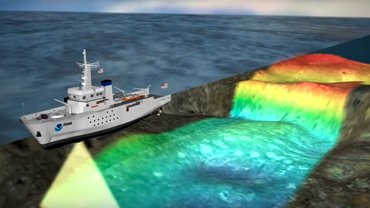Transcript
NARRATOR:
Here at NOAA, researchers are exploring the deep ocean to better understand our ocean and its fascinating marine life and unusual habitats.
We are using unmanned vehicles similar to those NASA uses to search for alien life on other planets.
On Camera:
In two thousand nineteen, we traveled off the U-S coast... and found some amazing things…. Let’s take a look.
“Oh my gosh it’s a feeding frenzy, oh
my gosh.”
Eighty miles off the coast of South Carolina,
deep below the surface, there’s a big fight
going on for dinner. Scientists on a NOAA
ship are watching this scene with robot cameras.
“What are they eating? A swordfish?...Zoom out zoom out. Oh my gosh! Yes, that has a whole shark in its mouth.”
Wow, that was intense. And what’s amazing about this is that researchers around the world can follow the action on a live video feed to learn more about life in the ocean.
Further north, in an underwater canyon off New England, we found another dinner scene. Take a look at this tug of war over a dead squid.
Scavenging can be a way of life for creatures on the seafloor. They rely on dead animals that drift down from above.
"That crab’s like no you can’t have my squid. These cutthroat eels are pretty hardcore when it comes to eating. Would you say they’re a little cut-throat Megan? I would."
As you can see, on the seafloor, everything gets recycled. Nothing goes to waste.
“Go crab for keeping hold of your meal.”
We are also finding important new habitats. These huge mounds of deepwater coral extend all the way from Florida to the Carolinas and could be thousands of years old. We were lucky enough to explore two mound features that revealed extensive, healthy Lophelia coral reefs. Before this expedition, no one knew they were even there.
Scientists want to know if the coral mounds are connected or grow in patches. This year, we found that corals in this area are much more extensive than anyone thought.
Sometimes scientists get lucky...Last summer - in the Gulf of Mexico - they saw something otherworldly..... A glimpse of a giant squid that is rarely seen by humans.
This footage was captured by a camera system that films the deep ocean without disturbing light-sensitive creatures. It uses red light invisible to most deep-sea inhabitants, as well as a lure that looks like a glowing jellyfish. This camera system is one of many advanced tools used to explore the sea.
Exploring underwater on this planet may be a lot like exploring an ocean on another planet. Engineers have to build machines that can survive extreme pressure and temperatures and one day, ROVs like these could be diving in an ice-covered alien ocean.
We are curious about how the ocean works and what lives in it. But people also rely on the ocean for food...energy, medicines...and for their livelihoods. We can’t survive without the ocean.
That’s why we need to understand how it works and how it’s changing.
Look what scientists found off the coast of California, in the Monterey Bay National Marine Sanctuary.
Scavengers are feasting on a dead whale carcass that sank to the bottom. It’s a good day to be an octopus!
To see more amazing footage and follow our expeditions live, go to NOAA’s Ocean Explorer website…
...or visit Ocean Today for more videos like this one...
...so join us as we explore the ocean... and the creatures that call it home.
 An official website of the United States government.
Here's how you know we're official.
An official website of the United States government.
Here's how you know we're official.

